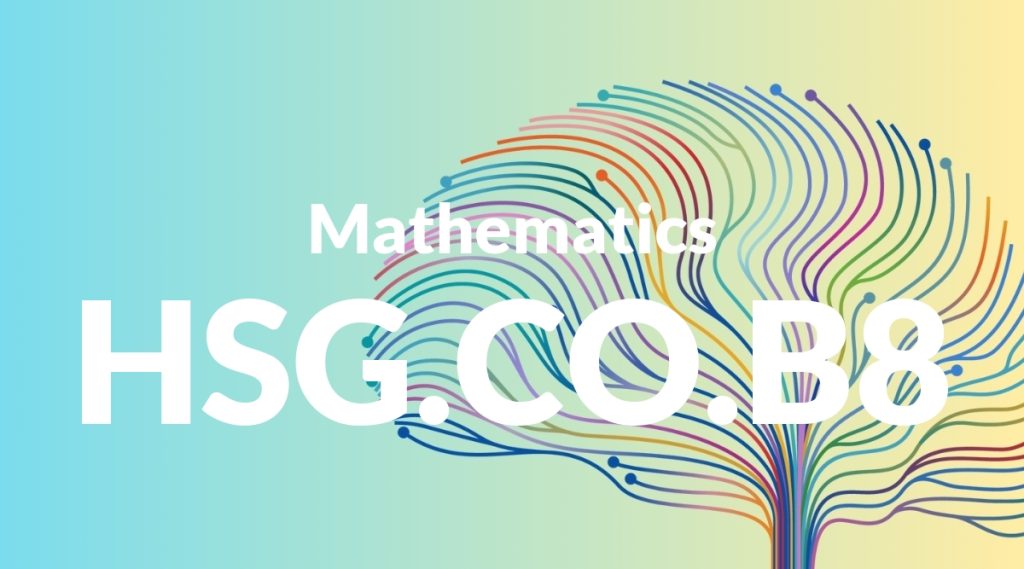Standard: HSG.CO.B8 – Explain how the criteria for triangle congruence (ASA, SAS, and SSS) follow from the definition of congruence in terms of rigid motions.
Grade level: High School: Geometry
Subject: Mathematics
Domain: Congruence
Teacher Overview
This standard focuses on explaining the criteria for triangle congruence (ASA, SAS, and SSS) through the lens of rigid motions. Understanding these criteria is crucial for students as it lays the foundation for proving geometric theorems and solving complex problems involving congruent figures. Students should be familiar with basic geometric shapes, triangle properties, and rigid motions like translations, rotations, and reflections.
After mastering this standard, students will be able to prove geometric theorems, understand properties of other geometric figures, and apply congruence criteria in more complex problem-solving scenarios.
Common Misconception 1
A common misconception is that congruent triangles must have the same orientation. This is incorrect because congruence is based on size and shape, not orientation.
Intervention 1
To address this misconception, use dynamic geometry software to demonstrate that triangles can be congruent even if they are oriented differently. This visual aid will help students understand that orientation does not affect congruence.
Common Misconception 2
Another misconception is that the congruence criteria ASA, SAS, and SSS apply to all polygons. This is incorrect as these criteria are specific to triangles.
Intervention 2
To remediate this, provide examples and non-examples, showing that these criteria are unique to triangles. Use other polygons to illustrate why these criteria do not apply.
Prerequisite Knowledge
Students should have a basic understanding of geometric shapes, the properties of triangles, and the concept of rigid motions such as translations, rotations, and reflections.
Subsequent Knowledge
Students will develop skills in proving geometric theorems, understanding the properties of other geometric figures, and applying congruence criteria in complex problem-solving scenarios.
Instructional Activities
- Use dynamic geometry software to explore triangle congruence criteria.
- Engage in hands-on activities with physical models of triangles.
- Solve geometric proofs involving triangle congruence.
- Collaborate on projects that apply triangle congruence in real-world contexts.




